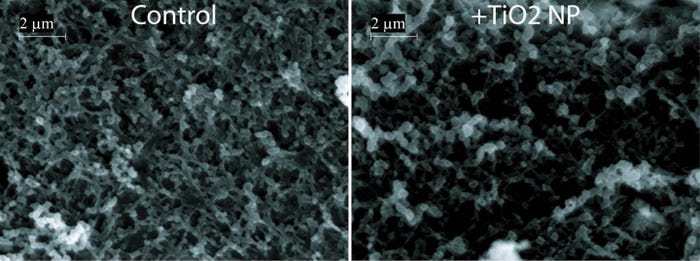Food additive could alter intestinal cellsFood additive could alter intestinal cells
Titanium dioxide, a common food additive, could reduce our ability to absorb some nutrients, according to new research.
February 22, 2017

As if we needed another reason to stay away from Twinkies, candy and gum, researchers have found that a common additive in some of America’s favorite foods mess with our ability to digest key nutrients.
The ability of small intestine cells to absorb nutrients and act as a barrier to pathogens is "significantly decreased" after chronic exposure to nanoparticles of titanium dioxide, a common food additive found in everything from donuts to bread, according to research from Binghamton University, State University of New York.
Titanium dioxide is generally recognized as safe by the U.S. Food and Drug Administration, and ingestion is nearly unavoidable. "Titanium oxide is a common food additive and people have been eating a lot of it for a long time—don't worry, it won't kill you!—but we were interested in some of the subtle effects, and we think people should know about them," Biomedical Engineering Assistant Professor Gretchen Mahler, one of the authors of the paper, said in a university release about the research.
"There has been previous work on how titanium oxide nanoparticles affects microvilli, but we are looking at much lower concentrations," Mahler said. "We also extended previous work to show that these nanoparticles alter intestinal function."
 The researchers exposed intestinal cells to three meals’ worth of titanium oxide over five days. Doing so reduced the cells’ microvilli, absorptive projections on the outside of the cell. Fewer microvilli weakened the intestinal barrier, slowed metabolism and some nutrients (iron, zinc and fatty acids) were more difficult to absorb. Signs of inflammation increased and enzyme functions tanked.
The researchers exposed intestinal cells to three meals’ worth of titanium oxide over five days. Doing so reduced the cells’ microvilli, absorptive projections on the outside of the cell. Fewer microvilli weakened the intestinal barrier, slowed metabolism and some nutrients (iron, zinc and fatty acids) were more difficult to absorb. Signs of inflammation increased and enzyme functions tanked.
"To avoid foods rich in titanium oxide nanoparticles you should avoid processed foods, and especially candy. That is where you see a lot of nanoparticles," Mahler said.
Results of the study were published in the journal NanoImpact.
You May Also Like



